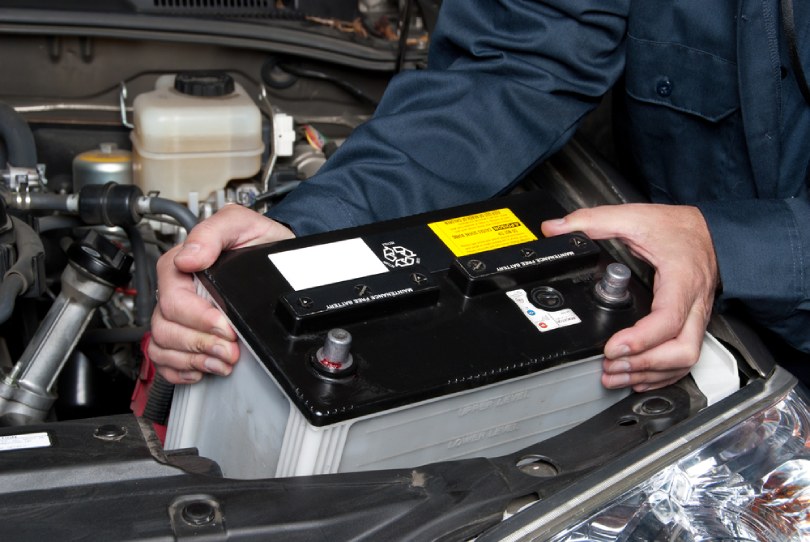Since more people are working from home in this covid-19 pandemic, the incidents of dead batteries are rising day by day. In today’s economy, it is important to know how long your car can go undriven before the battery is dead.
Here we will look at why a battery dies, how long it takes for the battery to die, some reasons why the battery dies, and a step-by-step guide to jump your battery if it does die.
How Long Does a Car Battery Last Without Driving?

Brand-new batteries
The battery in a car that is brand-new but never driven will only last about two to three months. Vehicles with accessories that use the battery when the car is off may find the battery dies faster.
In order to keep the battery charged, drive it at least once a week or start the car and run it for 10 to 15 minutes so the battery can recharge.
Disconnected batteries
Any disconnected battery should be removed from the car and placed in a cool, dry space. Safely storing it and removing it from the vehicle will increase the battery’s life.
When you remove the battery from the car, it needs charging about every 12 weeks. This will help the battery last for up to six months longer.
Why car batteries die
Timespan
Starting the vehicle and idling or driving shouldn’t be less than once a week leaves the battery with a poor charge. Batteries recharge themselves as you drive. If you are not driving the car, the battery will not be able to charge.
People errors
The most recurrent cause of a dead battery is human error. For example, leaving on the headlights, forgetting the interior light is in use, and the car door not being closed will drain the battery, especially if you have children!
Keeping the battery terminals free of corrosion will ensure the battery contacts can deliver the charge to the car needed from the battery.
Outside temperature
Batteries don’t like cold are, especially temperatures below zero. So be sure you are charging the battery if you are not driving. It is wise to drive the car every 2-3 days to keep the battery charged.
The Battery Is Dead: What Do You Do Now?
There are few options when you are out driving and the battery dies. You can call someone for help, start walking, or wait for someone to stop to help.
Carrying jumper cables in the car for an emergency is a great idea. Here are the steps to jump your car with battery cables.
Step 1: Have the person helping you park their car facing your engine and park close enough for the cables to reach both batteries. Shift the vehicle to neutral or park and turn off the engine. Be sure to engage the parking brake.
Step 2: The positive battery terminal will have a “+” or “pos.” Be sure to place the red clip on the positive terminal. Place the other red clip on the other vehicle” s positive clip.
Step 3: The other terminal is the smaller of the two and is negative. Place the black clip on the negative terminal of the other car.
Step 4: Place the last clip away from the battery on the bare metal of your car. One of the metal supports, for the hood, is ideal for this.
Step 5: Get in your car and start the engine.
a) If the car doesn’t start right up, make sure the clips are correctly connected.
b) Have the other car run for about five minutes, then retry to start the vehicle.
Once the car starts, do not turn it off. Instead, put away the cables and ride around in the car for at least fifteen to twenty minutes to allow the vehicle to recharge.
If the car won’t start or if the next time you start the car, and it won’t start, you will need to replace the battery.
Replacing vs Recharging a Car Battery – How to Decide?
Before you decide to replace the battery, use a voltmeter to check the batterie’s voltage.
A good battery voltage is 12.4 – 12.7. If it’s a bit less than this, try jump-starting the car and driving around for at least an hour.
If the voltage is 11 – 12, you can take it to a mechanic for a charge or place the car on a trickle charger. If the voltage is less than 11, you probably need to replace the battery.
The batterie’s age is a significant factor in deciding what to do with the battery. Most batteries last three to five years. Batteries original to the car usually won’t last that long. Older batteries don’t hold a charge, and you don’t want to keep jumping the car to use it.
If you’re having a hard time starting the car in the winter, it will save you time and money to purchase a battery warmer or a maintainer so the vehicle will turn over in the colder weather.
What voltage is best to maintain a car battery?
12.6 volts or more is what a fully charged battery should hold. When testing a running car, the battery should have a voltage of 13.7 – 14.7.
Using a voltmeter is the most accurate way to test your batterie’s voltage.
How to know if your car battery is covered by a warranty?
For new car battery warranty
Despite the bumper-to-bumper warranty, most car batteries warranties are two years /24,000 miles (batteries are considered a consumable item!) Before the bumper-to-bumper warranty expires, have the battery checked, especially if you have battery-related problems.
For the battery you’ve purchased
Price is a major consideration here. You are paying for the battery and the warranty.
There are standard 2-year warranties and more expensive ones like a 5-year warranty. In addition, some shops offer upgrades like gold and silver plans.
Stick with the standard warranty. After a few years, most warranties are prorated and the more expensive one doesn’t give you an added advantage. For instace, the battery may be covered at 100% for 2 years, then you only get a percentage of what the battery was worth after the 2 years.
Place the sales receipt in a Ziploc bag to keep it in good condition and take a picture in case you need it later. Always keep the receipt and warranty in the car and it will be handy in an emergency.










Leave a Comment